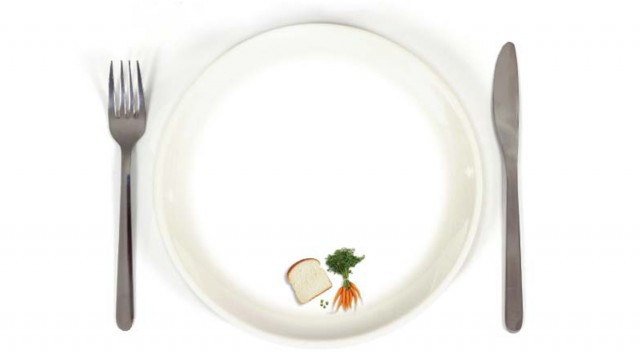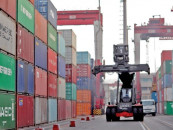Agriculture sector hungers for attention
Thousands of Pakistanis live and die never knowing what a full stomach feels like.

Agriculture sector hungers for attention
But even though the Global Hunger Index (GHI) has rated Pakistan the 58th most food insecure country in Asia little has been done to resolve the situation. The agriculture sector has depicted a growth rate of only 3.4 per cent per annum.
Agriculture plays a strategic role in the economy of the country, providing food to the fast growing population of the country, accounting for 21 per cent of GDP and employing about 45 per cent of the country’s total population.
Despite its importance to food security this sector has been suffering from persistent decline. Over the past six years the overall performance of agriculture was dismal with growth at an estimated 2 per cent. Major crops like wheat, rice, sugar cane and seed oil saw a negative growth of 0.2 per cent compared with growth of 7.3 per cent last year while minor crops declined to 1.7 per cent in 2008-09 and 1.2 per cent in 2009-10.
In recent years the country has experienced a shortfall of wheat, the staple diet of the nation. Experts predict wheat harvests will not meet the 2009-10 targets of 25 million tons. A United Nation official has stated that consumption of wheat in Pakistan has dropped by 10 percent owing to the people’s diminishing purchasing power. This shows that while the population has grown, the consumption of wheat has gone down. Only 13 per cent of districts in Pakistan produce surplus wheat while more than half of the districts face a shortage. Flow of wheat and flour to Fata and Afghanistan makes the country vulnerable to frequent food crises while more than half of the districts are extremely deficient in wheat production. The constant phenomenal increase in the wheat support price has always caused a high rise in inflation.
The second essential food item in Pakistan is edible oil. Only 684,000 tons was produced last year which only meets 25 per cent of the country’s demand. This year 1.2 million tons of edible oil was imported for Rs77.7 billion. This was a big burden in the foreign exchange position and it adversely impacted the food security in the country.
The food security crisis in Pakistan is the result of bad management and governance as the government has failed to check corruption, smuggling and artificial increases in basic commodity prices. Conditions can substantially be improved if the government increases investment in the agriculture sector, improves the management of food stocks, concentrates on the availability of food at reasonable prices and focuses on a marketing and distribution system.
In order to bolster the agriculture sector and improve food security Pakistan may take a page out of Bangladesh’s book where the government has taken several steps to enhance agriculture by providing liberal credit to poor farmers. In Bangladesh poverty has fallen from 57 percent of the population in 1990 to 40 percent in 2005 despite frequent natural catastrophes. During the last decade Bangladesh has exhibited an impressive annual growth rate of 6 percent. Now India is also considering introducing a second green revolution to strengthen its food security programme.
Pakistan should take concrete steps to introduce its first green revolution by cooperating with Brazil which has successfully launched several food security programmes. Today Brazil no longer suffers from food scarcity, perhaps one day we will be able to say the same.
Published in The Express Tribune, June 28th, 2010.


















COMMENTS
Comments are moderated and generally will be posted if they are on-topic and not abusive.
For more information, please see our Comments FAQ